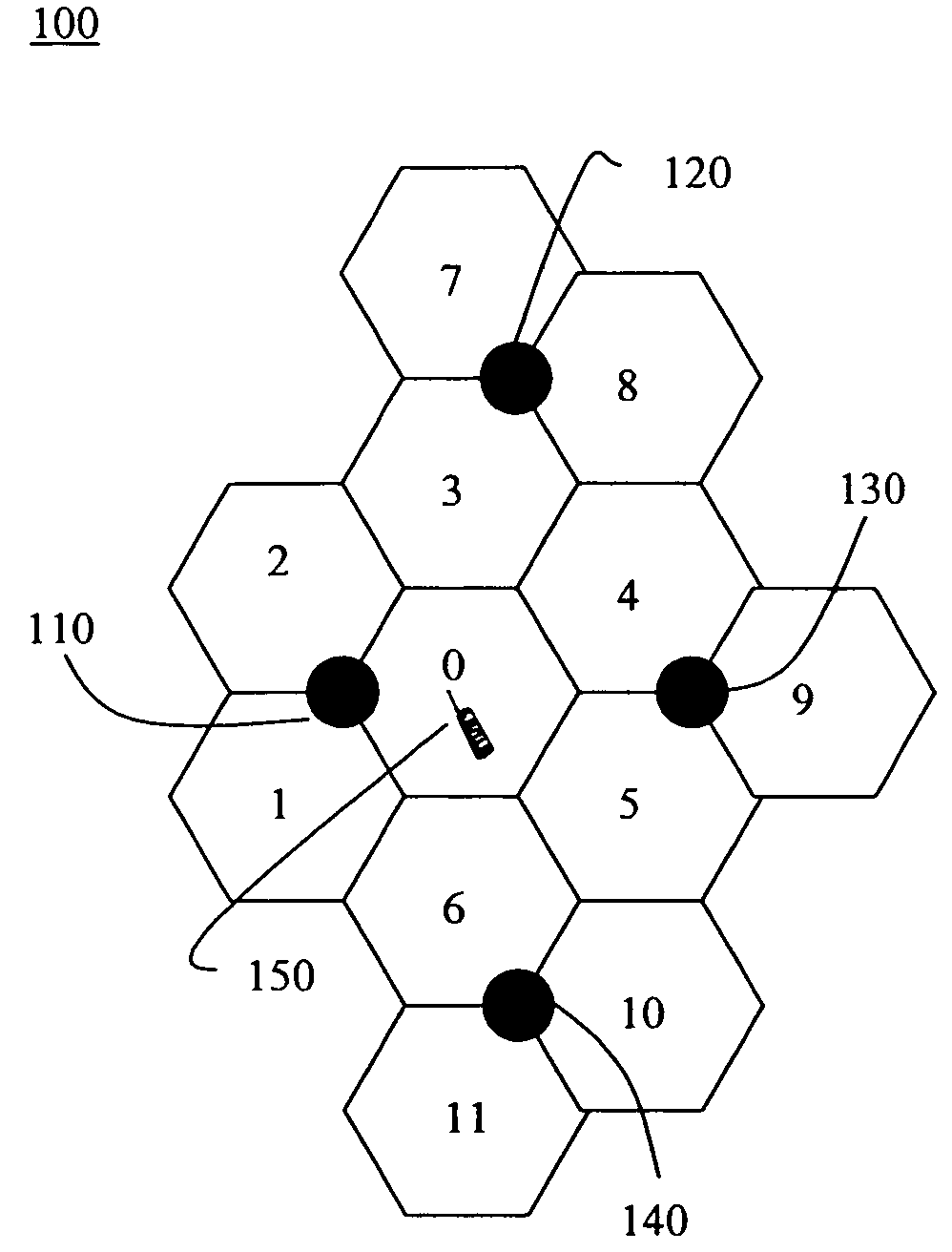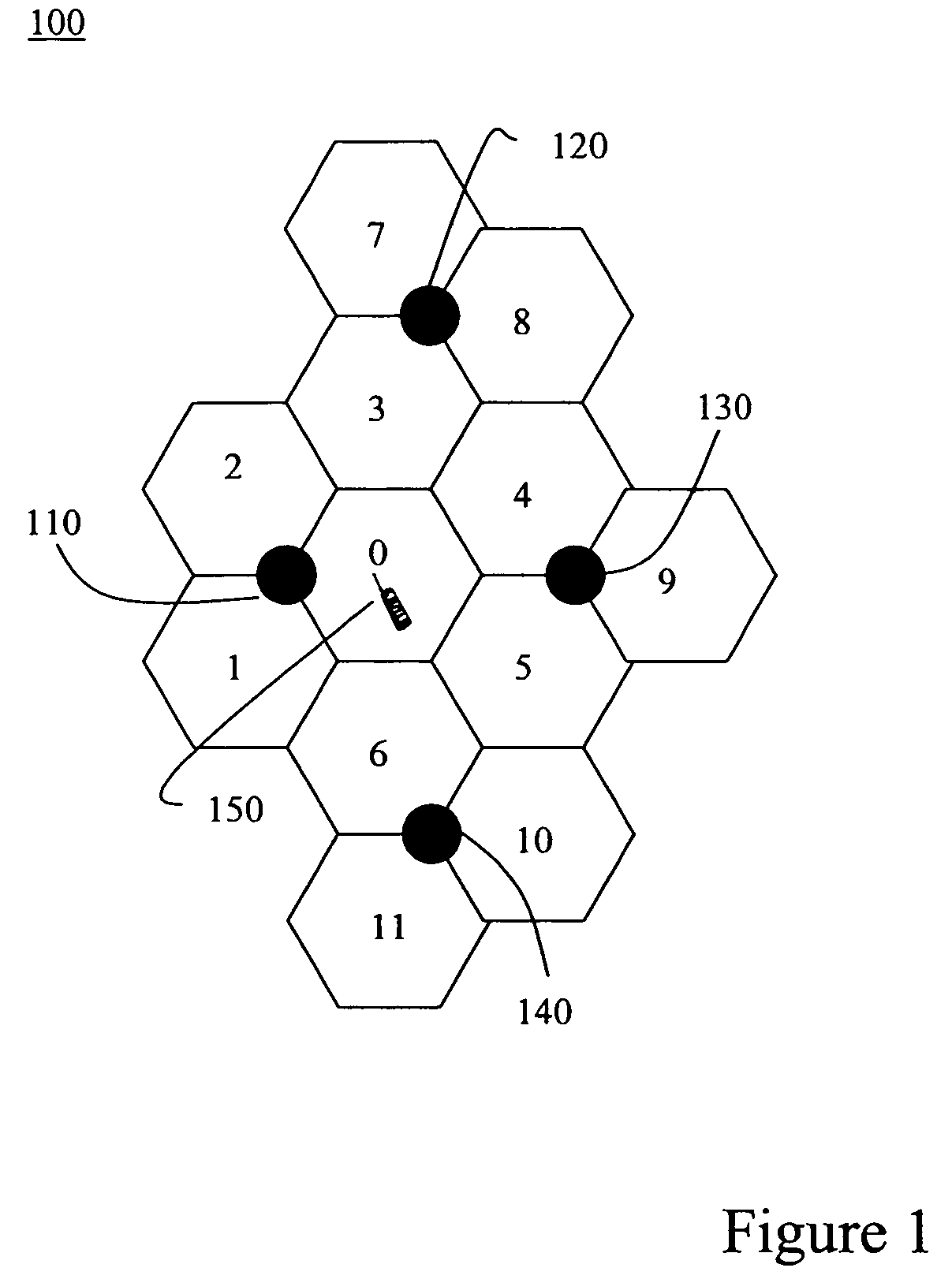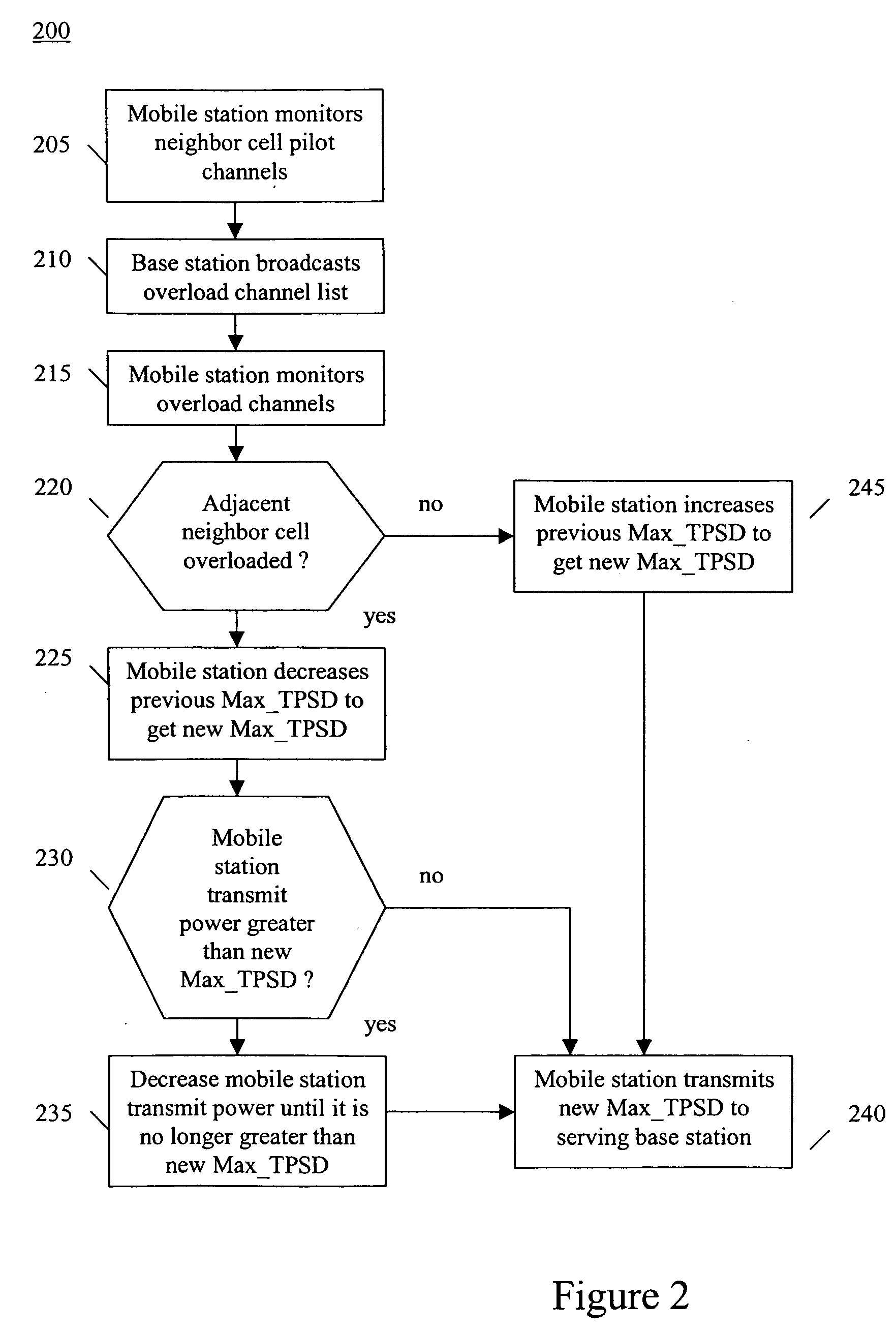Method for adaptively controlling other cell interference
a technology of other cell interference and adaptive control, which is applied in the direction of power management, electrical equipment, radio transmission, etc., can solve the problems of both in-cell and other-cell interference still produced, and achieve the effect of reducing transmit power constraints
- Summary
- Abstract
- Description
- Claims
- Application Information
AI Technical Summary
Benefits of technology
Problems solved by technology
Method used
Image
Examples
first embodiment
[0014]Wireless communication system 100 may be configured with an adaptive interference control technique or protocol for managing other-cell interference using measurements of the pilot signal strengths, i.e., pilot power. FIG. 2 depicts a flowchart 200 illustrating an adaptive interference control method used in accordance with the present invention. In this embodiment, information indicative of whether a cell is interference overloaded, i.e., interference level in the cell is above a threshold interference level, is communicated to mobile station 150. Such overload information is then used to determine whether an adjustment should be made to the maximum transmit power spectral density (Max_TPSD) constraint. In another embodiment, the adjustment may be made to some other mobile station transmit power constraint, such as a constraint relating to a total maximum allowable mobile station transmit power or to actual mobile station transmit power.
[0015]In step 205, mobile station 150 i...
second embodiment
[0028]FIG. 3 depicts a flowchart 300 illustrating an adaptive interference control method used in accordance with the present invention. In this embodiment, overload information is communicated among base stations 110, 120, 130 and 140, and used by the serving base station, i.e., base station of serving cell, to determine whether an adjustment should be made to the maximum transmit power spectral density (Max_TPSD) constraint. In another embodiment, the adjustment may be made to some other mobile station transmit power constraint, such as a constraint to a total maximum allowable mobile station transmit power, or to actual mobile station transmit power.
[0029]In step 305, mobile station 150 is in a call and is monitoring the pilot channels of its neighbor cells, i.e., measuring pilot signal strengths of neighbor cells. While mobile station 150 is in the call, its transmit power is continuously being adjusted in accordance with well-known power control techniques and limited by the ma...
PUM
 Login to View More
Login to View More Abstract
Description
Claims
Application Information
 Login to View More
Login to View More - R&D
- Intellectual Property
- Life Sciences
- Materials
- Tech Scout
- Unparalleled Data Quality
- Higher Quality Content
- 60% Fewer Hallucinations
Browse by: Latest US Patents, China's latest patents, Technical Efficacy Thesaurus, Application Domain, Technology Topic, Popular Technical Reports.
© 2025 PatSnap. All rights reserved.Legal|Privacy policy|Modern Slavery Act Transparency Statement|Sitemap|About US| Contact US: help@patsnap.com



